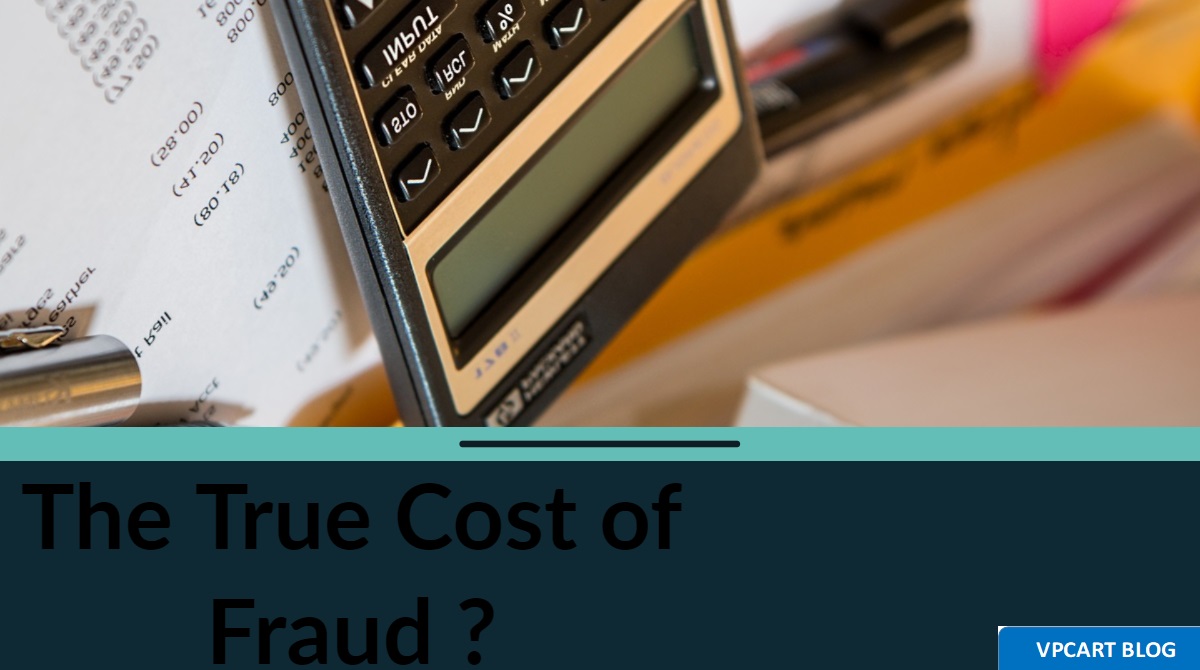The True Cost of Fraud


The retail fraud landscape is characterized by constant, costly and fast-moving changes. Just when small business owners think they have successfully conquered one fraud scheme, another more sophisticated threat springs up as the next challenge. And with the consumers demanding faster, near-frictionless transactions across digital commerce channels, these incessant demands have created new opportunities for fraudsters to manipulate identities across the digital marketplace and maximize the amount of damage they can quickly inflict on businesses—often without immediate detection. Balancing consumer expectations while effectively combatting retail fraud can feel like an endless battle that drains resources and focus from your core business objectives, so the question commonly asked is “Can there be a way out of this?”
The LexisNexis yearly True Cost of Fraud report was recently released. The report gives merchants clear insights into the current fraud trends in the US. By taking a look at what channels and industries are facing specific fraud problems, merchants can take action heading into the 2020 year and solidify a fraud strategy. In this post, we will be looking at the key findings of the report that we find most important for merchants.
The Basics
The True Cost of Fraud report studied 700 US risk and fraud executives in retail and eCommerce businesses. The report included a mix of merchant sizes, good types, and payment channels. In this study, fraud is described as a fraudulent and/or unauthorized purchase (true fraud) and a fraudulent request for refund/return (chargeback fraud and friendly fraud).
The current cost of fraud for merchants in 2019 is $3.13 for every dollar fraud. This was a 6.5% increase from 2018 when the cost of fraud was $2.94. The fraud cost is made up of dispute costs, fees, merchandise redistribution, labor, legal prosecution, and IT/software security.
Mobile Fraud Trends
Mobile shopping is expected and used by most consumers. This is a trend that has customer demand, but it makes merchants vulnerable to fraud. The report found the top challenges merchants face when it comes to mobile eCommerce are:
- Verifying the identity of a cardholder
- Determining the source of the transaction when selling goods internationally
- Differentiating between a customer and a bot (especially with digital goods)
- Finding a balance between preventing fraud and creating too much friction for customers
- Friendly and Chargeback Fraud vs. True Fraud
Friendly fraud is when a cardholder mistakenly disputes a charge they authorized.
This type of fraud can stem from simple forgetfulness or an unclear merchant descriptor, among other scenarios. Chargeback fraud, on the other hand, is when a cardholder maliciously disputes a charge in an attempt to get their money back while still retaining the goods or services.
Often when discussing disputes and chargebacks, friendly fraud and chargeback fraud are combined, but we feel that it’s important to differentiate them. In this report, they combined friendly fraud and chargeback fraud disputes, calling them 1st party fraud, meaning that the cardholder made the purchase and is disputing the charge. They then compared that data to 3rd party fraud, or as we like to call it, true fraud. True fraud is when a fraudster obtains credit card credentials and successfully uses them at a merchant’s site or store.
Now that we have those definitions out of the way, the report found that for eCommerce merchants, 1st party fraud accounted for 39% of fraud losses and 3rd party fraud accounted for 36%. For eCommerce merchants that sell digital goods, 1st party fraud accounted for 43% of fraud losses and 3rd party fraud accounted for 40%. Where brick-and-mortar retailers found that 1st party fraud accounted for 27% of fraud loss, 3rd party accounted for 27%, and lost/stolen merchandise accounted for 26%.
Digital Goods Have More Risk
Fraudsters will find the places where it is easiest to make money. Digital goods seem to be a rising target for fraudsters. The nature of digital products makes it easier for fraudsters to receive the goods because there is no need for a physical address. And it is convenient to sell digital goods and quickly transfer them to the buyer.
Over the last year, credit card fraud has risen for merchants that sell digital goods. For mid/large eCommerce merchants that sell digital goods, they saw credit card fraud increased from 47% of fraud losses in 2018 to 64% in 2019.
Specific Geographical Location and Channels Can Bring More Fraud
E-commerce allows the fraudsters to slip around verification efforts that would usually be in place on a desktop purchase. Then merchants that allow international purchases open the door to fraud attempts from all over the world. Mid/large scale retailers that sell internationally and through mobile channels see a monthly average of 3,157 fraud attempts, with 1,327 ending up being successful. Compared to mid/large retailers that sell abroad with no eCommerce, the monthly average is 2,006 fraud attempts with 724 ending up being successful.
Stopping Fraud Before it Happens
The True Cost of Fraud report gives merchants a glimpse into what fraud they are currently facing. When creating a fraud strategy, it is important to put preventive measures in place for all types of fraud. The only way to prevent true fraud disputes is to set up accurate fraud prevention, including fraud filters and scoring. Traditionally, friendly fraud and chargeback fraud could only be addressed after a dispute was initiated with a dispute response document. Now there is a better way to prevent friendly fraud and chargeback fraud disputes before they happen with Real-time Resolution.
Need To Know
The VP-CART Fraud Alert system runs from within your admin. When looking at an order the merchant will be able to view the likelihood of an order being fraudulent, by clicking on the Fraud Alert link the pop-up window shown above will appear. It is mobile friendly and can be used in the browser of your mobile phone allowing you to verify orders from where ever you are.




















 TrustGuard - PCI Security Scanner
TrustGuard - PCI Security Scanner
